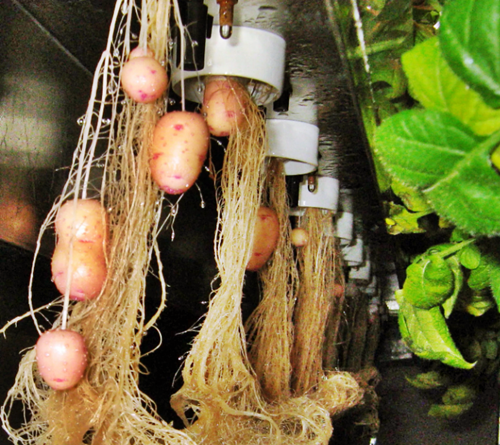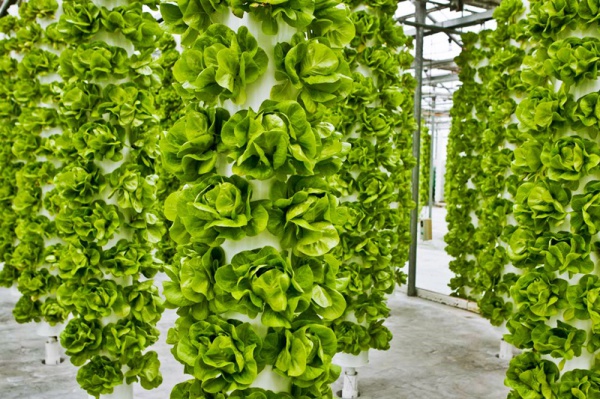Aeroponics: Vertical Air Growing

Aeroponics: Vertical Air Growing
Description of technology
Humanity cannot exist without agricultural products, but the work of a farmer is hard and does not always bring the expected income. It also largely depends on climatic conditions and soil composition. Research on how to grow vegetables has led scientists to create better technologies that relieve the farmer of this disadvantageous addiction. Aeroponics stands out among the proven techniques.
Its goal is to achieve a high yield without the use of harmful fertilizers and other growth promoters, as well as to reduce the effort / cost of the cultivation process.
With the help of aeroponic installations, vegetables and greens can be grown all year round, using the method of active oxygen saturation of the roots, which are not in the ground, but hang freely in the air.

For irrigation, drip irrigation systems are used, in which aqueous solutions of nutrients are used.
Pros and cons of using aerial technology
The concept of aeroponics was developed at the beginning of the twentieth century, but it achieved close attention only in the two thousandth. This is due to its contradictory nature, which is expressed in a number of positive aspects and the presence of disadvantages.
Aeroponics advantages:
- Active oxygenation of the roots enhances growth and accelerates crop development.
- Artificially created favorable conditions for plants make it possible to grow those that do not take root in the open ground of a particular region.
- Without fertilizers, it is possible to get an ecologically clean high yield.
- Maintaining the microclimate necessary for the culture, vegetables can be harvested all year round.
- To care for plants, you only need to automate the water and oxygen supply system, which reduces time costs, reduces the need for manual labor, and also eliminates the need to use expensive agricultural equipment.
Disadvantages of the method:
- to take advantage of the benefits, you need to spend a lot: buy equipment for arranging the installation;
- failures in the system lead to the rapid death of plants;
- maintenance of "quarantine" conditions is required to exclude the possibility of infection of open roots;
- The poorly studied quality of vegetables grown causes distrust of their nutritional value.
Despite such nuances, the method wins the hearts of vegetable growers and begins to be actively used in the vastness of advanced agricultural countries.
Aeroponic system device
An expensive professional device in a small area can be replaced with a homemade one. For this you will need:
- A two-tier container / reservoir that does not let in sunlight as it can destroy the roots.
- Water filling tank.
- A pump that supplies water to an aerosol sprayer. It needs to be powerful, so it's worth buying either a specialized one or replacing it with an automotive compressor.
- Solution hoses with sealed connections.
- Nozzles-nozzles capable of converting a saturated liquid into a fine-droplet suspension, forming a fog. This helps plants to absorb nutrients quickly and efficiently.
- Shelves that act as plant holders. They are made from materials that are not afraid of moisture, and nests are made for containers with plants. The size of the pots depends on the characteristics of the root system of a particular vegetable.
- Watering automation is impossible without a timer. Better if it is electronic - more accurate, provides convenient control of even small intervals at all stages of plant growth.
When you intend to grow vegetables on an industrial scale, it is worth turning to the experience of specialists and installing a system that meets the requirements for growing plants.

Nutrient solution for aerial plants
It must include potassium, nitrogen and phosphorus. The rest of the ingredients depend on the type of culture, stages of its development. The ideal ratio is achieved by trial method. They also use universal mixtures developed for another technology - hydroponics.
To independently prepare proven solutions of Knop, Ellis or Guericke, it is necessary to accurately observe the proportions. First, all dry substances are weighed, then they are separately dissolved in a small amount of water, then they are combined and the volume of liquid is brought to the required level.
When preparing a solution, it is important to follow one rule: do not use tap water or hard water.
Application of ultrasound in aeroponics
Ultrasonic waves increase the efficiency of aeroponic installations. Passing through the liquid, they cause the solution to "bubble". The bubbles burst and form a kind of fog. In this state, beneficial substances from the mixture penetrate more easily and evenly into the root system.
This innovation has a significant drawback - a significant increase in the temperature of the liquid (up to 40 ° C). To avoid damage to plants, microdroplets have to be cooled to the optimum temperature (20 ° C) by means of a special device, and this is an additional cost.
Output
In regions with unsuitable conditions (soil, climate) for growing individual crops, aeroponics will be a good alternative. This is especially beneficial for the industrial scale of vegetable growing.
In individual farms, such a system is used more actively, since the equipment of a small greenhouse requires less costs and quickly pays for itself.
Always something interesting
BE ABOUT LATEST EVENTS AND PROFITABLE ACTIONS FROM OUR COMPANY


